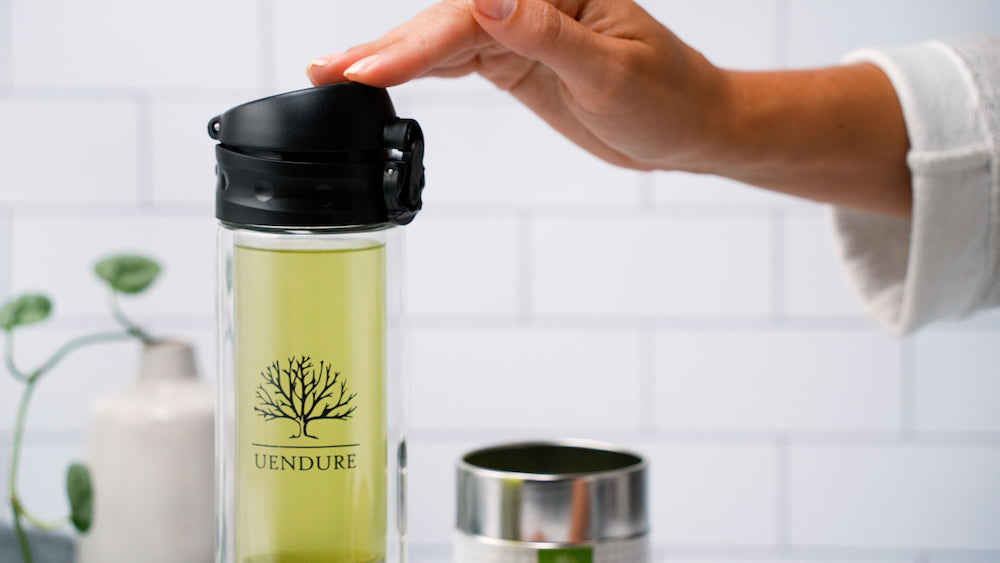Save 15% when you buy the Original Bottle Bundle!

Matcha tea may seem like other green tea. It is made from the same plant as green tea, and so shares many of its health benefits. Like a few other teas, it is unfermented and so it retains the physiological signature of the plant itself. Like one or two other teas, it is made by grinding the leaf into a fine powder and dissolving that powder in hot water so that the entire leaf is consumed.
But matcha is absolutely unique among tea products. It is made of only the de-stemmed leaves, so it concentrates certain substances found in plant. However, the most significant difference is that the tea plant is grown in the shade prior to harvest. This causes the plant to react to the lack of sunlight and push out leaves that are different than normal green tea leaves.
Why Does Shade Make Matcha Unique?
The leaves grown in the shade by the green tea plant have a higher amount of chlorophyll than is normally found in green tea leaves. This is because chlorophyll is used by the plant to convert sunlight to energy, and the plant is striving to grow with less sunlight than it receives under normal growing conditions. The result is a leaf with a fantastically complex blend of compounds.
First of all, chlorophyll is great for human health. The mechanisms by which this plant compound interacts with the body are both varied and complicated, but also well known to science. Chlorophyll is found in dark green vegetables, and there is no need to document how long or how often we have been told about the health benefits of this food group.
However, the benefits of chlorophyll are still being analyzed by science. A 2013 study found that it helped dieters lose weight! This is in addition to an earlier study that found the same impact on mice that were being fed a high fat diet. The chlorophyll is thought to have worked with the metabolic systems of the body and created sensations of being full sooner, resulting in a lower caloric intake.
What Else Makes Matcha Unique?
Higher levels of chlorophyll are not the only part of matcha’s unique profile. Keep in mind that matcha is made from only the wafer-thin layers of the leaf. Stems and veins are removed before the remaining material is delicately and slowly ground to avoid heating the plant material. This means that compounds found throughout the plant are concentrated in matcha.
One of the most beneficial compounds is EGCG. This is perhaps the most powerful anti-oxidant in nature, and matcha has been found to have more of it than any other tea. Anti-oxidants fight in the body against free radicals, compounds that science is now learning may be one the primary causes of aging in the human body.
EGCG has also been found to benefit the brain. Studies have connected this compound with lower levels of anxiety and depression. Remarkably, it has also been associated with countering the impact of dementia. The effect of EGCG on the human body is clearly a field that requires additional study to be fully understood.
Of course, there is no reason to wait for those studies. Matcha, and matcha combined with high quality Japanese green tea, can provide these health benefits today while we wait for science to fully explain just how this happens. Perhaps some day they will also be able to explain why it is also so delicious!


